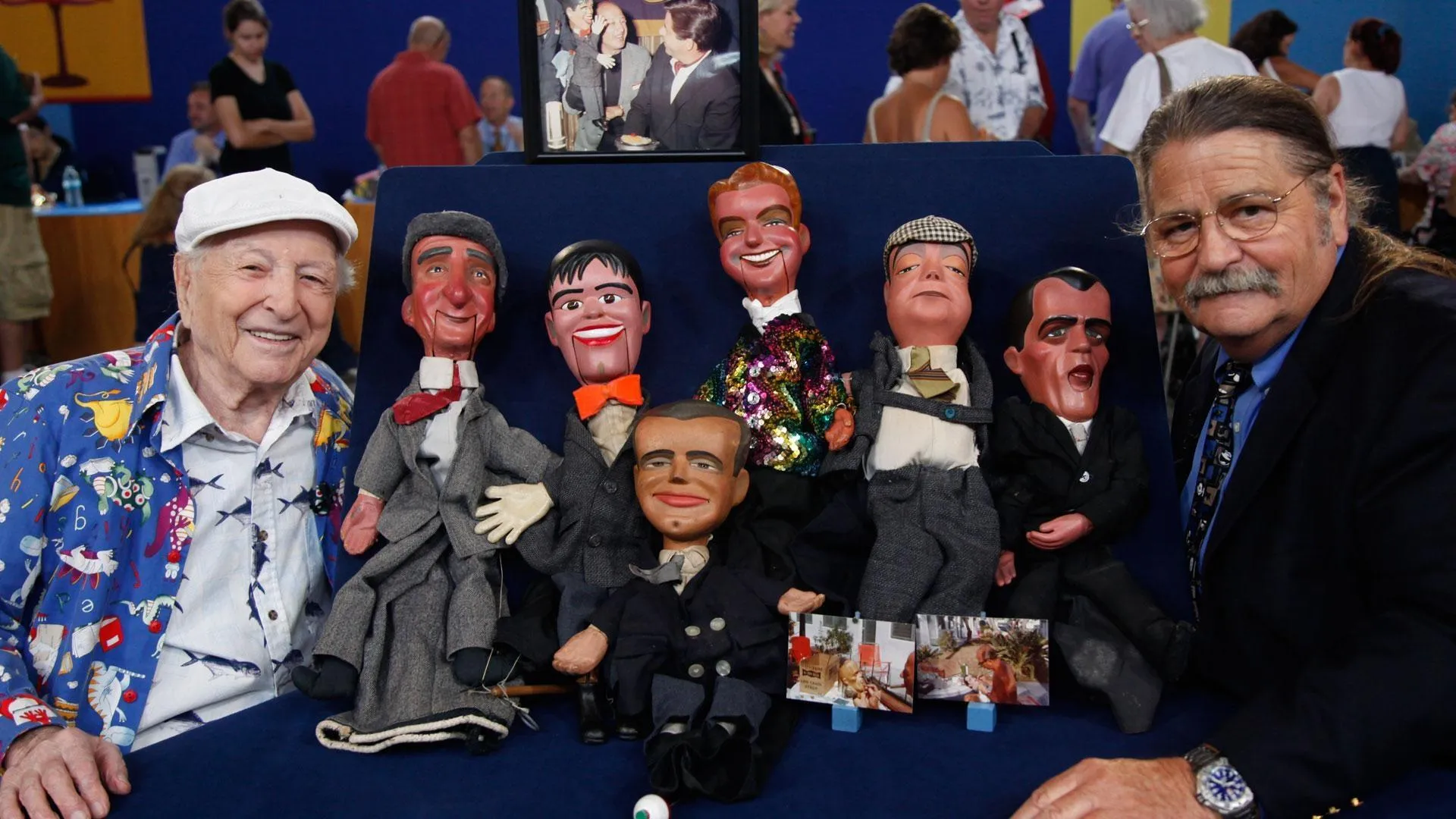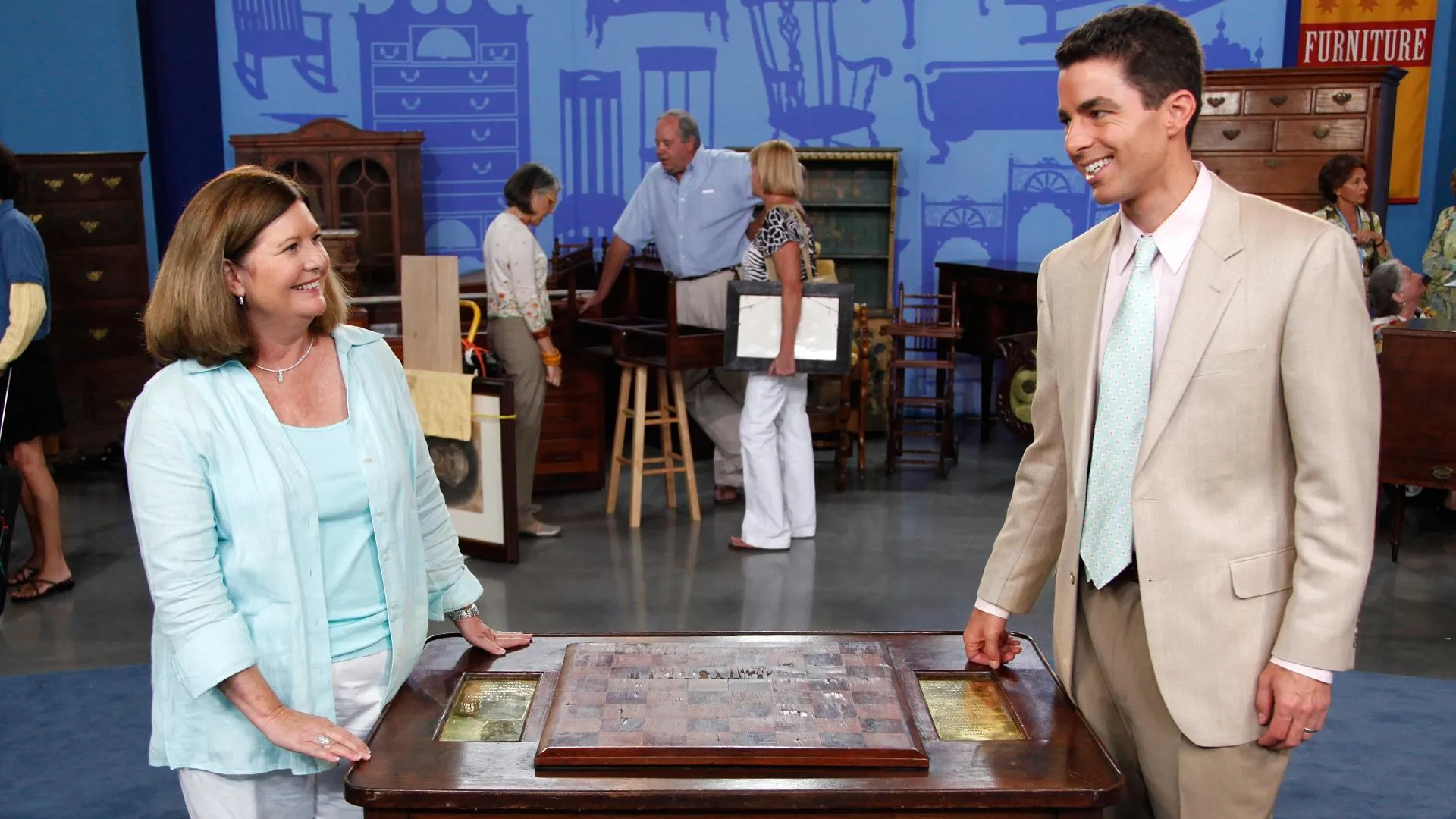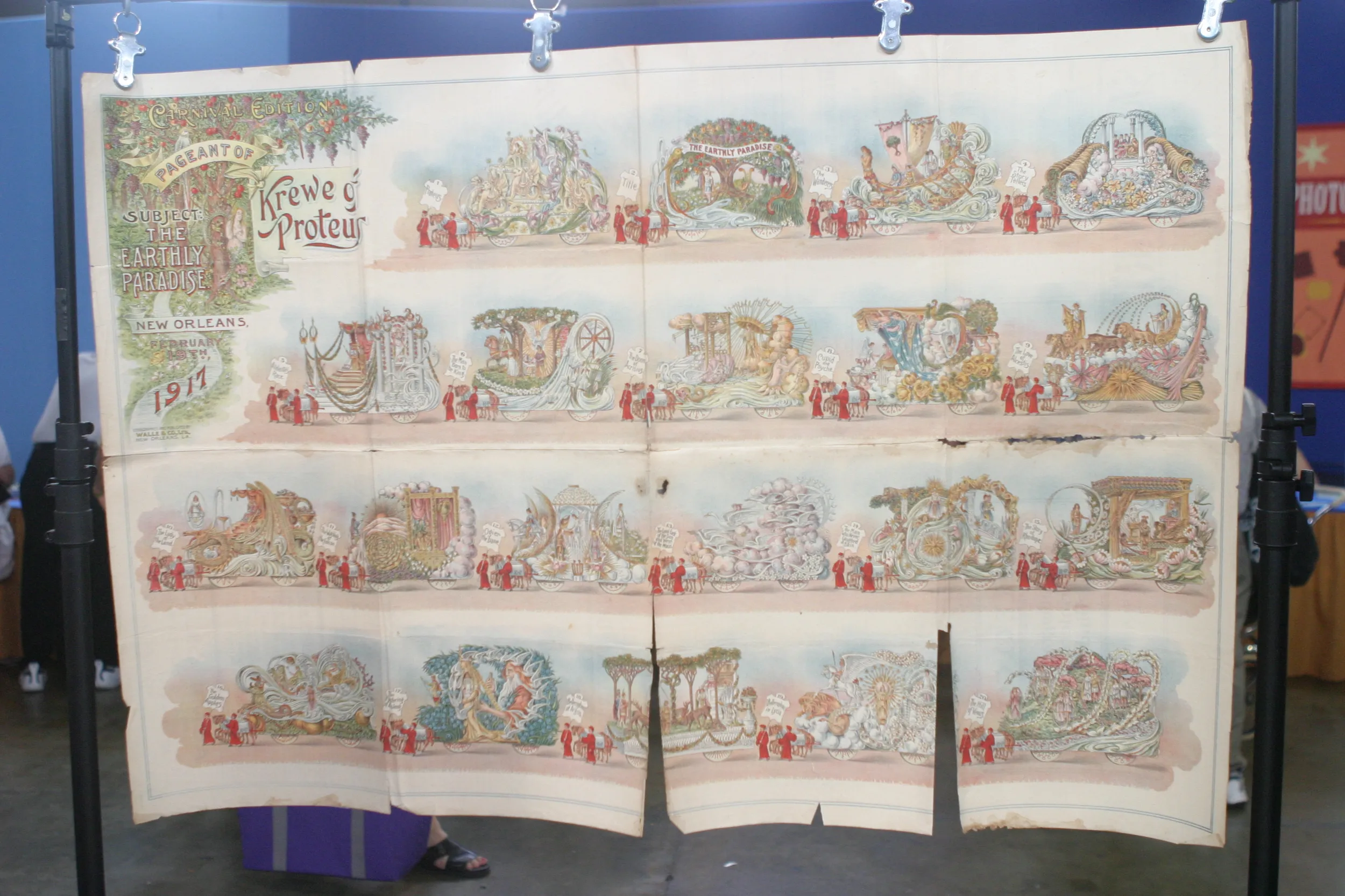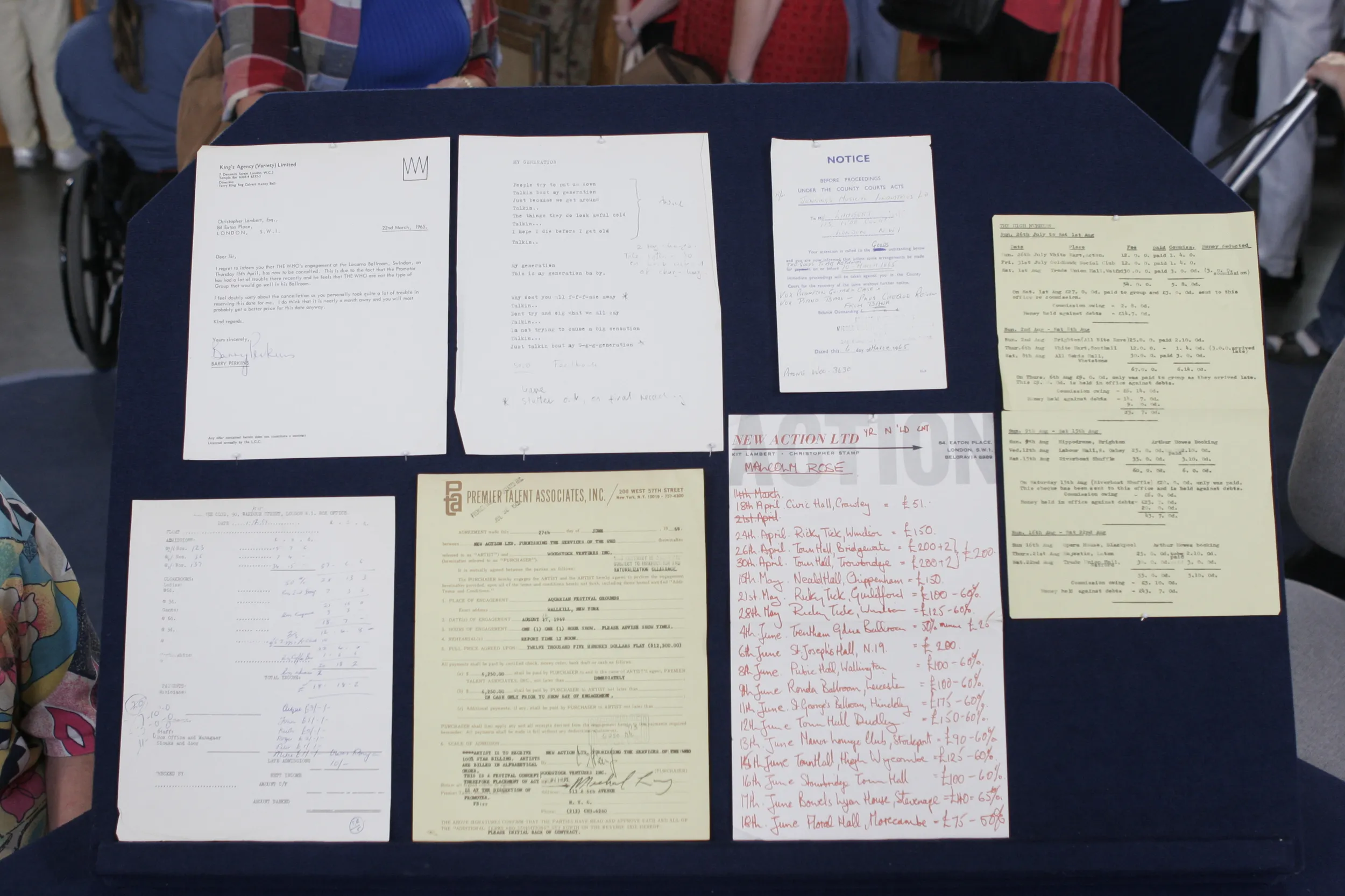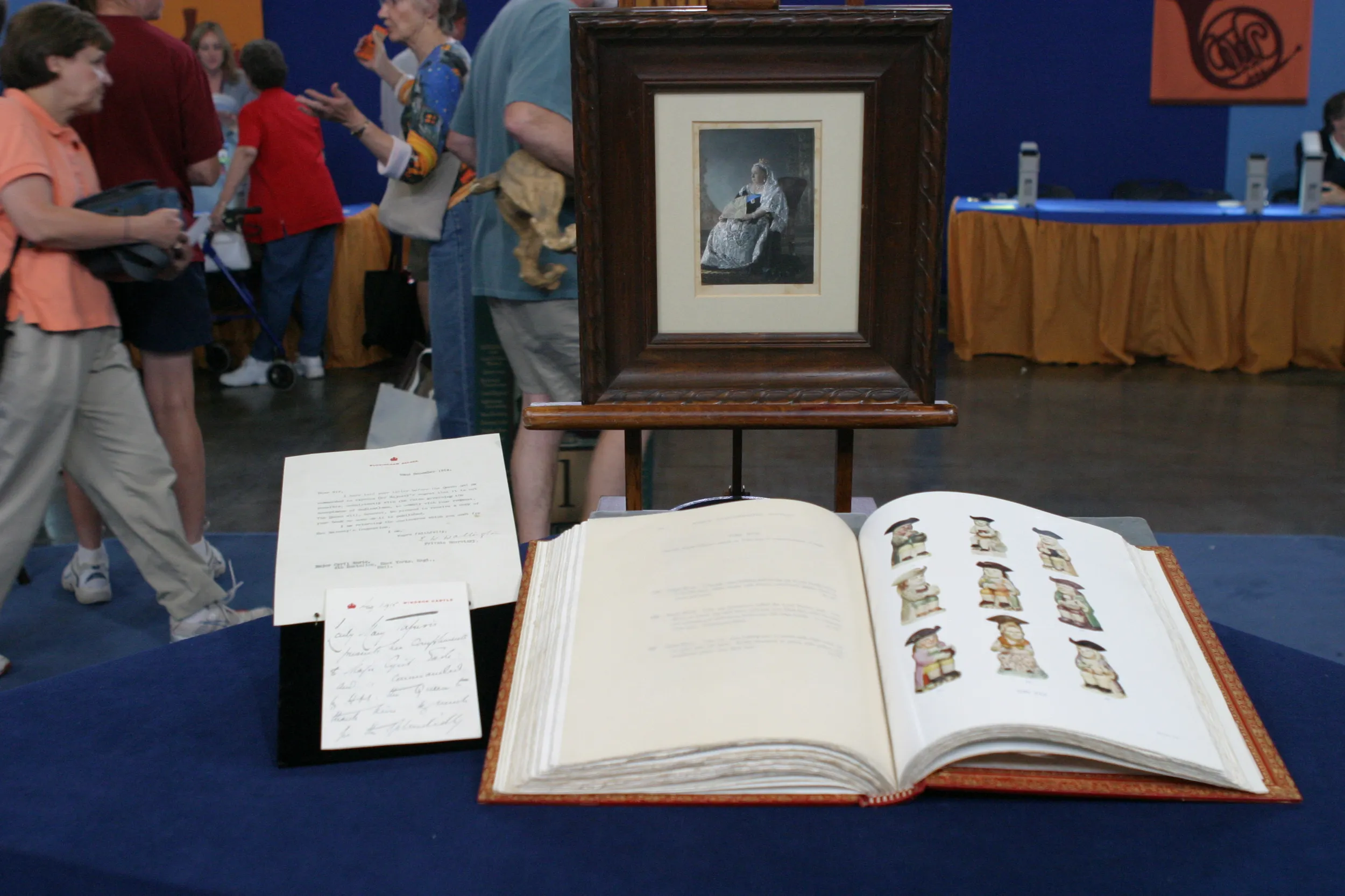GUEST: I brought my great-great- grandfather's Civil War sword.
APPRAISER: And who did he serve with?
GUEST: With Ninth Indiana Volunteers.
APPRAISER: What's his name?
GUEST: George Hobart Wilbur.
APPRAISER: And we have "George H. Wilbur, Ninth Indiana Ball," and "Lookout Mountain."
GUEST: Mm-hmm.
APPRAISER: It's an odd place for an inscription to be on a sword. Generally, when you see an inscription on a sword, it's on the brass of the guard, or it's on the top of the scabbard.
GUEST: Why would he have put it down there?
APPRAISER: I have no idea. Well, to find that out, we look at the letter. He writes home from Raccoon Mountain, Georgia, on December 3, 1863. And he writes home that, "A ball," meaning a bullet, "hit my sword while in the scabbard. "I cannot get the sword out. I will send it home to you." December 3 was only a few days after the Battle of Lookout Mountain. And the reason he put his inscription there, when we turn the sword over...
GUEST: that thing got slammed.
APPRAISER: Yeah. It hit that scabbard so hard, it drove the scabbard into the sword, and no matter how hard you try, you cannot pull that sword out of there. I don't know what was going on that day, but there's something else that's interesting about this. He knew how to put that sword in the scabbard. Something was going on crazy around him, because he put the sword in backwards. Then it was hit. It probably saved at least his leg.
GUEST: That's the story.
APPRAISER: That indentation is so massive that it had to have either been a large caliber musket ball or possibly even a canister ball. But no matter what it was, you can imagine the force it would have taken to put an indentation in that. And matter of fact, if we look at the bottom, it blew the whole edge of the scabbard out. And this uniform, what about this uniform is important?
GUEST: Well, that's a lieutenant uniform.
APPRAISER: Exactly. He was a lieutenant in early 1863. I found him, and he served with the regiment until September 24, 1864. The sword itself is a model 1850 foot officer sword. It's the correct sword for a lieutenant. We have the brass handle, which is correct. It has the floral design, which lets us know that it's a foot officer's sword instead of a regular cavalry or a staff and field officer sword. And we have the iron scabbard. And we also will have a steel blade. And that's one thing that lets us know the ferocity that the bullet that hit the sword had, because you don't just bend iron like that.
GUEST: No.
APPRAISER: As a group, this is something that would need to be insured for about $5,000.
GUEST: Wow. Really? Boy, that's amazing.
APPRAISER: The sword, if it didn't have the bullet strike and we didn't have the other documentation, this sword would be worth about $750 to $1,000. So it makes a world of difference that we know who, what, when, where and why.
GUEST: Could it be fixed?
APPRAISER: Oh, fixed? That would be like spray-painting the Mona Lisa.
GUEST: (laughs): Oh, okay.
APPRAISER: That's what makes this sword so special. It needs nothing.
GUEST: Well, that's great to know. Thank you so much.
APPRAISER: You are very welcome.

